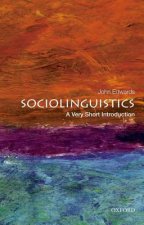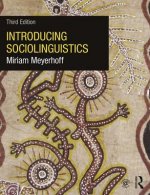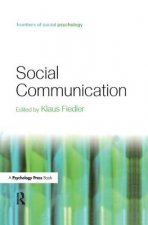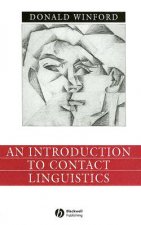
Code: 04939954
Graphic Pluralism
This issue examines how Amerindian graphic codes interacted with alphabetic writing in the colonial polities of the Americas. Expanding on the common understanding of writing, the issue introduces the term graphic pluralism to des ... more
- Language:
 English
English - Binding: Paperback
- Number of pages: 176
Publisher: Duke University Press, 2010
- More about this

17.58 €
RRP: 18.54 €
You save 0.96 €
Availability:
50/50 We think title might be available. Upon your order we will do our best to get it within 6 weeks.
We think title might be available. Upon your order we will do our best to get it within 6 weeks.We search the world
You might also like
-

Devil's Financial Dictionary
16.67 € -21 % -

Sin, Death and the Devil
15.86 € -19 % -

Brands and Branding Geographies
63.08 € -9 % -

STICK TO THE BEAT
7.37 € -

Etudes Hydrotomiques Et Micrographiques
17.58 € -

Grand Challenges in Environmental Sciences
59.54 € -

Drinkwater
20.61 € -1 %
Give this book as a present today
- Order book and choose Gift Order.
- We will send you book gift voucher at once. You can give it out to anyone.
- Book will be send to donee, nothing more to care about.
Availability alert
Enter your e-mail address and once book will be available,
we will send you a message. It's that simple.
More about Graphic Pluralism
You get 44 loyalty points
 Book synopsis
Book synopsis
This issue examines how Amerindian graphic codes interacted with alphabetic writing in the colonial polities of the Americas. Expanding on the common understanding of writing, the issue introduces the term graphic pluralism to describe situations in which multiple systems of inscription were used in the same linguistic community. The contributors' studies of graphic pluralism shed light on colonial interactions in North America, Mesoamerica, and South America, and on how both alphabets and indigenous systems helped form the basis of colonial control and resistance. One contributor shows how the Spanish colonial powers and the traditional Maya nobility in the Yucatan struggled over alphabetic literacy and the continued use of hieroglyphics. Another contributor documents how the Natick speakers of Martha's Vineyard adopted alphabetic literacy for their own purposes in the seventeenth and eighteenth centuries, incorporating writing as a tool of traditional governance. In another article, a Spanish translation is compared to the original Nahua text to show how the two versions provide very different views of the Spanish conquest of the city-state of Mexico-Tenochtitlan. Yet another contributor examines how competing language ideologies in the Andes were used to characterize khipus (Andean knotted strings) and alphabetic script. Contributors include: Margaret Bender; Heidi Bohaker; Galen Brokaw; Kathleen J. Bragdon; John F. Chuchiak, IV; Sabine Hyland; Frank Salomon; David Tavarez; Kevin Terraciano; and, Gary Urton.
 Book details
Book details
Book category Books in English Language linguistics Sociolinguistics
17.58 €
- Full title: Graphic Pluralism
- Language:
 English
English - Binding: Paperback
- Number of pages: 176
- EAN: 9780822367253
- ISBN: 0822367254
- ID: 04939954
- Publisher: Duke University Press
- Weight: 259 g
- Dimensions: 233 × 154 × 17 mm
- Date of publishing: 08. February 2010
Trending among others
-

Sociolinguistics: A Very Short Introduction
9.29 € -28 % -

Sociolinguistics
11.01 € -23 % -

Explain Me This
32.64 € -17 % -

Intercultural Communication
31.43 € -14 % -

Oils Language & Culture
37.09 € -

Prodigal Tongue
10.30 € -28 % -

Fall of Language in the Age of English
34.77 € -

Sociolinguistics
41.14 € -

Thought and Language
13.84 € -

Language and Gesture
63.99 € -

Introducing Sociolinguistics
53.27 € -4 % -

Sign Language in Action
123.43 € -

Language of Gaming
55.19 € -

Politeness
61.15 € -5 % -

Sociolinguistics and Corpus Linguistics
31.53 € -19 % -

Adventures in Yiddishland
37.09 € -

Discursive Construction of National Identity
49.02 € -

Sociolinguistics
43.97 € -5 % -

Empirical Linguistics
134.35 € -

Sociolinguistics and Deaf Communities
40.73 € -

Discourse and Practice
65.20 € -

Ideal City
72.48 € -

Sociolinguistics
58.73 € -

Principles of Linguistic Change, Volume 3
51.65 € -

Women Talk More Than Men
31.13 € -

Religion and Language in Post-Soviet Russia
75.81 € -

Sociolinguistics
73.59 € -

Linguistic Anthropology - A Reader 2e
93.41 € -

Oxford Handbook of Language and Law
67.62 € -

Social Communication
79.15 € -

Introduction to English Sociolinguistics
30.62 € -

Ecology of Language Evolution
53.37 € -

Law and Language
139.20 € -

Introduction to Contact Linguistics
170.44 € -

Language, culture, identity
55.90 € -

Urbanization of Rural Dialect Speakers
45.99 € -

Cognitive Sociolinguistics Revisited
36.08 € -19 % -

Alliteration and Sound Change in Early English
51.25 € -

Sociolinguistics
190.97 € -

Advances in Cultural Linguistics
184.70 € -2 % -

American English - Dialects and Variation 3e
68.03 € -

Language Hoax
25.97 € -

Meaning of Yiddish
36.39 € -

Resisting Linguistic Imperialism in English Teaching
48.82 € -7 % -

Caribbean and African Languages
85.32 € -25 % -

Understanding Cultures Through Their Key Words
188.54 € -

Sociolinguistic Patterns
34.97 € -2 % -

White Kids
36.28 € -14 % -

Language of Law School
88.45 €
Collection points Bratislava a 2642 dalších
Copyright ©2008-24 najlacnejsie-knihy.sk All rights reservedPrivacyCookies


 15549 collection points
15549 collection points Delivery 2.99 €
Delivery 2.99 € 02/210 210 99 (8-15.30h)
02/210 210 99 (8-15.30h)